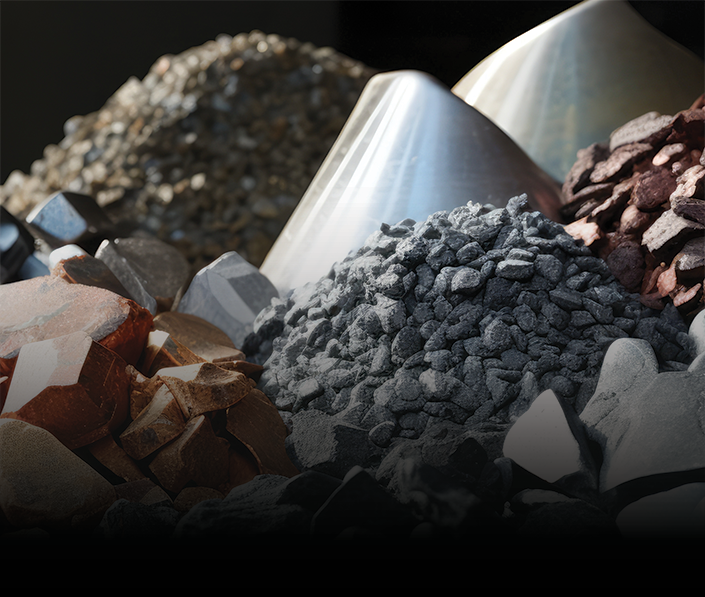The U.S. Military Risks Mineral Shortages in a U.S.-China War
Published: 1 February 2025
By Gregory D. Wischer
via the Military Review website

Minerals
Piles of rare Earth elements both mined and refined. (Photo by Anastasiia via Adobe Stock)
Lessons from World War I, World War II, and the Korean War
Minerals are foundational in warfighting. They are used in defense platforms like attack submarines, heavy bombers, and mobile missile launchers, and in munitions like submarine-launched torpedoes, air-launched standoff missiles, and ground-launched rockets and missiles. In its last three great power wars—World War I, World War II, and the Korean War—the United States lacked sizable mineral stockpiles yet was the world’s dominant mineral producer. The U.S. military experienced mineral shortages during these wars due to increased defense production, expanded export controls, and contested shipping routes. Today, the U.S. military is at a greater risk of severe mineral shortages if a U.S.-China war were to unfold: the United States has limited mineral stockpiles; low domestic mineral production; and heavy mineral import reliance, including from its great power rival, China.
A mineral shortage can severely undermine war efforts and impact the war’s outcome. Importantly, mineral shortages can prove decisive. C. K. Leith partly attributes the loss of the Central Powers in World War I to mineral shortages, saying, “The acute shortage of essential minerals which they experienced was a very considerable factor in their ultimate defeat.” Similarly, John D. Morgan argues that mineral shortages undermined U.S. industrial mobilization during World War II and prolonged the war. The Allies also experienced mineral shortages in the early part of 1942, hindering defense production and bringing the Allies “dangerously close to losing the war,” according to Donald Nelson, director of the War Production Board during World War II. Critically, mineral shortages in a potential U.S.-China war may not only prolong the conflict but, if severe enough, also contribute to U.S. defeat.
U.S. Mineral Supply: Past and Present
The United States was a dominant mineral producer before the two world wars and the Korean War. At the dawn of World War I in 1913, the United States was the world’s leading producer of several important minerals (see the figure). Prior to World War II in 1938, the United States was the world’s dominant mineral producer, controlling major mineral resources across Canada, Central America, and South America. The United States was self-sufficient in many minerals before the Korean War in 1949, too. U.S. Bureau of Mines Director James Boyd declared, “During the last fifty years the United States has achieved preeminence among the nations of the world in producing, processing, and fabricating mineral raw materials.”8However, before these wars, the U.S. government (USG) largely lacked mineral stockpiles because it lacked a comprehensive mineral strategy. Still, the United States was the world’s dominant mineral producer before these wars.
The United States today has limited mineral production compared to these prior periods. Moreover, the United States increasingly depends on mineral imports to satisfy its domestic mineral consumption, which indicates a decline in mineral production relative to consumption. From 1954 to 2019, the number of minerals for which the United States was at least 25 percent net import-reliant increased from twenty-one minerals to fifty-eight minerals. It no longer mines many minerals that it previously did, such as gallium, manganese, niobium, or tantalum. More importantly, the United States is heavily import-reliant on China for many of its minerals. For its consumption of twenty-four mineral commodities in 2023, the United States was over 50 percent reliant on minerals imported from China. Like the prior periods preceding conflict, the United States has limited mineral volumes in the National Defense Stockpile. In 2023, the Department of Defense (DOD) estimated that, in a hypothetical war with China, the U.S. military would have shortages in sixty-nine materials. Therefore, the United States today has limited mineral production and mineral stockpiles—a more precarious U.S. mineral position versus prior periods before great power wars.
→ Read the entire article on the Military Review website .
External Web Site Notice: This page contains information directly presented from an external source. The terms and conditions of this page may not be the same as those of this website. Click here to read the full disclaimer notice for external web sites. Thank you.



